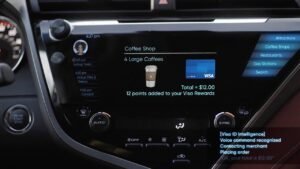Major retailers are seeing unprecedented success with loyalty programs, as new research shows 85% of consumers are more likely to stick with brands offering rewards, according to The Bond 2024 Loyalty Report. The study highlights how modern loyalty strategies have evolved beyond simple point systems into sophisticated customer engagement tools.
Industry experts identify four distinct loyalty program categories reshaping retail customer retention:
- Points-Based Programs Lead Digital Transformation
Traditional points-based systems remain the cornerstone of retail loyalty, with brands like Sephora revolutionizing the approach through digital integration. Their Beauty Insider program demonstrates how point multiplier events can drive significant increases in average order value (AOV) during promotional periods.
- Tiered Programs Create Premium Customer Segments
High-end retailers like Nordstrom have successfully implemented tier-based systems, requiring $500-$5,000 annual spend to maintain status levels. “Tiered programs create aspirational goals that drive higher purchase frequency,” notes retail analyst Mark Thompson. The Nordy Club exemplifies how exclusivity can motivate customer spending.
- Paid Membership Models Generate Recurring Revenue
Following Amazon Prime’s success, paid loyalty programs have gained traction across retail sectors. These subscription-based models provide immediate value through exclusive benefits while ensuring steady revenue streams. Industry data shows paid program members shop up to three times more frequently than non-members.
- Value-Based Programs Appeal to Conscious Consumers
Emerging value-based programs align shopping with social causes, attracting younger demographics focused on brand ethics. These initiatives typically include charitable giving components, enhancing brand reputation while building emotional connections with consumers.
Target’s Innovation in Digital Loyalty Target Circle represents the latest evolution in retail loyalty, implementing “streak” rewards that offer $30 in benefits when customers spend over $100 three times monthly. This gamification approach has increased both visit frequency and basket size.
What are the customer retention benefits?
- 80% of US consumers report increased purchase frequency after joining loyalty programs
- Word-of-mouth referrals reduce customer acquisition costs
- Higher average order values through strategic reward structures
- Enhanced customer data collection for personalized marketing
“Modern loyalty programs serve as powerful tools for building lasting customer relationships while gathering valuable consumer insights,” says retail technology expert Sarah Chen. “The key is selecting the right program type for your specific customer base and business model.”
If you’re thinking about loyalty, some implementation recommendations:
- Survey existing customers about preferred rewards
- Align program structure with brand values
- Integrate digital tools for seamless experience
- Monitor key metrics including enrollment, engagement, and AOV
Regular program optimization based on data insights














